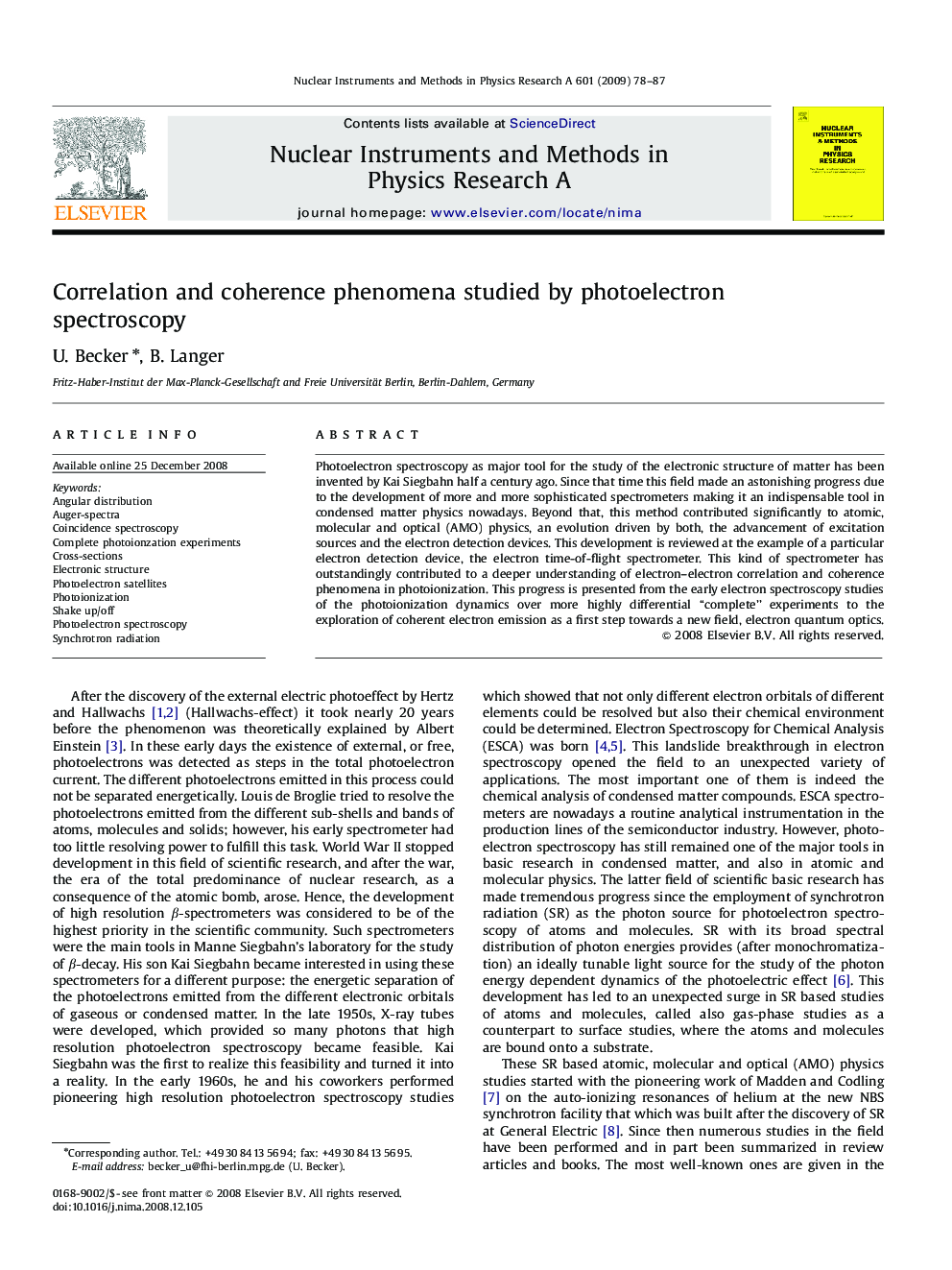| Article ID | Journal | Published Year | Pages | File Type |
|---|---|---|---|---|
| 1827773 | Nuclear Instruments and Methods in Physics Research Section A: Accelerators, Spectrometers, Detectors and Associated Equipment | 2009 | 10 Pages |
Abstract
Photoelectron spectroscopy as major tool for the study of the electronic structure of matter has been invented by Kai Siegbahn half a century ago. Since that time this field made an astonishing progress due to the development of more and more sophisticated spectrometers making it an indispensable tool in condensed matter physics nowadays. Beyond that, this method contributed significantly to atomic, molecular and optical (AMO) physics, an evolution driven by both, the advancement of excitation sources and the electron detection devices. This development is reviewed at the example of a particular electron detection device, the electron time-of-flight spectrometer. This kind of spectrometer has outstandingly contributed to a deeper understanding of electron-electron correlation and coherence phenomena in photoionization. This progress is presented from the early electron spectroscopy studies of the photoionization dynamics over more highly differential “complete” experiments to the exploration of coherent electron emission as a first step towards a new field, electron quantum optics.
Keywords
Related Topics
Physical Sciences and Engineering
Physics and Astronomy
Instrumentation
Authors
U. Becker, B. Langer,
